Accurate Square Footage Measurement for Painting

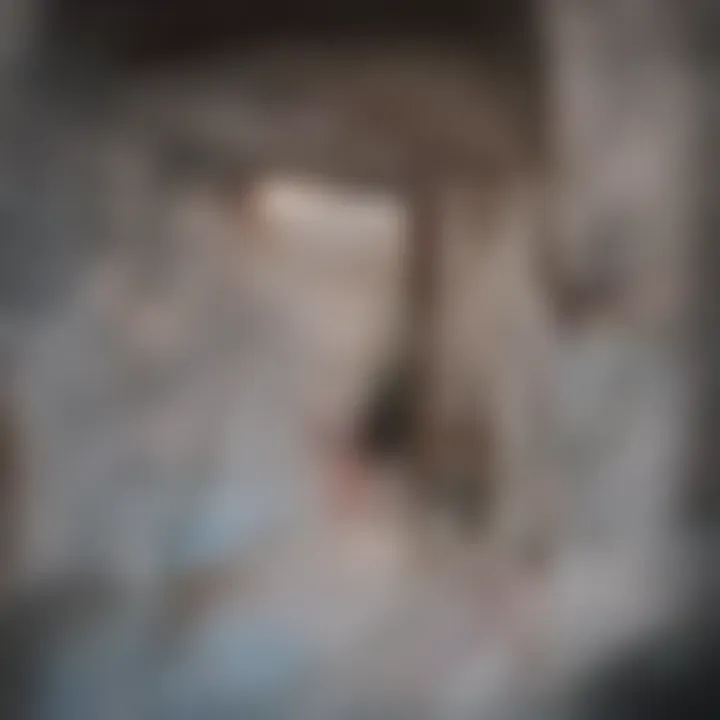
Intro
Accurate measurement of square footage is an essential step in the painting process. Whether you are a homeowner planning a fresh look or a professional painter managing multiple projects, knowing the precise area to be painted shapes not just the quantity of paint needed, but also the budget and expected outcome. This guide meticulously outlines the various techniques and tools available to ensure measurements are correct, thereby enhancing the overall painting experience.
In this comprehensive guide, we will cover the critical aspects of measuring square footage, including preparing the space, conducting the measurement efficiently, and troubleshooting common issues that may arise.
Home Design Inspiration
Focusing on home design elements can propel your painting project beyond just a color change. Understanding the architectural styles and current decor trends helps in selecting the right shades and finishes that enhance both aesthetics and functionality.
Architectural Styles
Familiarize yourself with predominant architectural styles to better inform your paint selections. For instance, if your home has a traditional feel, you might lean towards classic hues such as warm whites or soft grays. Conversely, modern homes often lend themselves to bolder colors and contrasting palettes, creating striking visual statements.
Innovative Decor Trends
Keeping an eye on innovative decor trends is crucial when painting your space. Earthy tones like terracotta and olive green are currently popular, as are gender-neutral color schemes. Couples looking for harmony might choose calming palettes, while individualistic designs could inspire adventurous mixes.
The Measurement Process
Let’s break down the method for measuring square footage, detailing steps, tools, and common calculations involved.
Tools You Will Need
- Measuring Tape: A 25-foot tape is typical for most indoor rooms.
- Laser Measure: For enhanced accuracy and efficiency, especially in larger or awkward spaces.
- Calculator: To perform necessary area calculations.
- Notebook: Document measurements and calculations.
Step-by-Step Measurement
- Prepare the Space: Remove furniture and any obstructions that may limit access.
- Measure Length and Width: For rectangular rooms, measure two opposing walls. For length, measure from corner to corner. Repeat this for width.
- Calculate Area: Multiply the length by the width for a rectangular room. For more complex shapes, divide the area into smaller rectangles or squares, measure, and sum the total areas.
- Consider Doors and Windows: Subtract the area of doors and windows from the total square footage. Typically, a standard door is around 20 square feet, and a window averages about 15 square feet.
Accurate measurements avoid wasted paint and save money on your project.
The End
With the right approach and tools, measuring square footage for painting becomes a straightforward task. Understanding architectural styles and current trends can inform your choices further, leading to a cohesive design. Take the time to measure accurately, and you not only enhance your project but create lasting value in your home.
Understanding Square Footage
Measuring square footage is a fundamental skill, especially for those looking to undertake a painting project. Understanding square footage allows homeowners and design enthusiasts to accurately plan their projects. The importance of grasping this concept cannot be overstated. Proper measurements can lead to significant savings, both in cost and time. Accurate square footage measurements directly influence various factors, such as the quantity of paint needed and the overall budget for a project.
Definition of Square Footage
Square footage refers to a unit of area measurement. It is calculated by multiplying the length and width of a room. For instance, if a room is 10 feet wide and 12 feet long, the square footage would be 120 square feet. The precise calculation of square footage is essential for various reasons. First, it serves as the foundation for many home improvement projects. If one is planning to paint, knowing the exact area will ensure that the right amount of paint is purchased, avoiding excess or depletion.
Importance of Accurate Measurements
Accurate measurements are crucial when preparing for a painting project. There are several benefits associated with precise calculations. Firstly, accurate measurements help to avoid the scenario of running out of paint mid-project, which can be frustrating and costly. Secondly, they allow for better budget management. Overestimating square footage may lead to unnecessary expenses, while underestimating can result in incomplete projects.
"Measuring correctly is not just about numbers; it's about making informed decisions that lead to successful outcomes."
Furthermore, understanding the importance of accurate measurements fosters confidence in executing design decisions. This knowledge empowers individuals to take on painting projects without fear, knowing that their preparations will result in a well-executed final outcome.
Tools Needed for Measurement
To achieve accurate square footage calculations for painting projects, having the right tools is essential. These tools not only help in obtaining precise measurements but also contribute to the overall efficiency of the project. The selection of measurement tools can significantly affect the quality of the work, particularly when it comes to determining the amount of paint needed and ensuring a smooth application process.
Using reliable instruments simplifies the measurement process. It allows for quicker assessments, minimizes errors, and leads to improved project outcomes. The following sections discuss the various tools most commonly used for accurate measurements, their unique characteristics, and the advantages they offer in this context.
Measuring Tape: A Fundamental Tool
Measuring tape is one of the most basic yet crucial tools in measuring square footage. It is available in various lengths, typically ranging from 12 to 100 feet. The flexibility and portability of measuring tape make it suitable for indoor and outdoor use.
When using a measuring tape:
- Always ensure it is straight and taut for an accurate reading.
- Check the starting point on the tape, as some tapes may have a small hook that could slightly alter the measurement depending on the angle it is held.
- Marking points on the wall can help in keeping track of measurements.
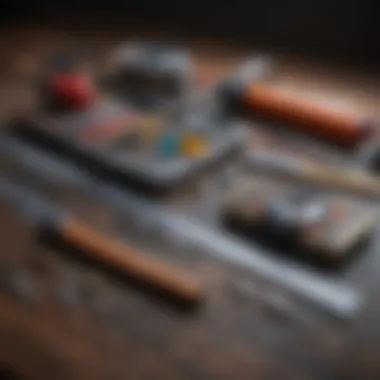
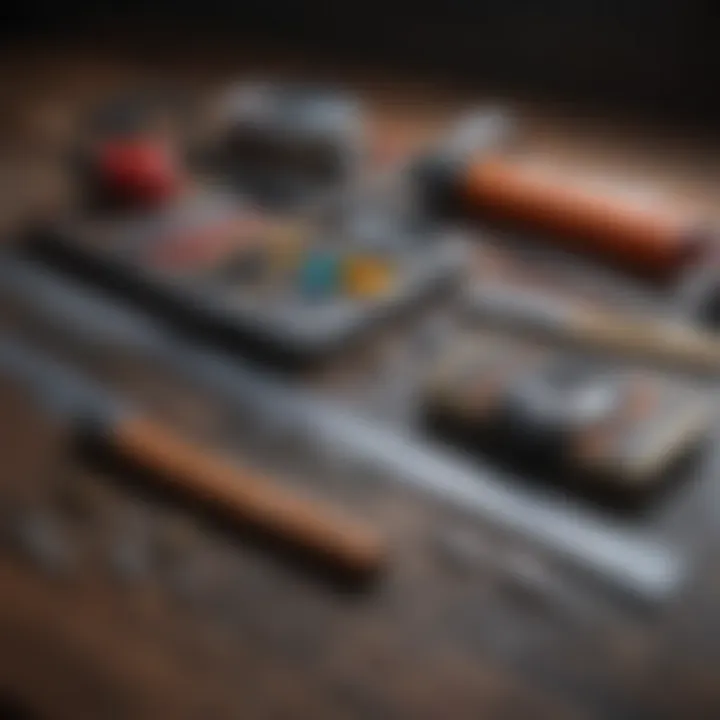
Measuring tape should be treated with care to avoid wear and tear. Consistent use can lead to the accurate capture of lengths, widths, and heights, ultimately providing the data needed for precise square footage calculations.
Digital Measuring Devices
Digital measuring devices represent a modern advancement in measurement technology. These devices can use laser technology to measure distances with remarkable accuracy. They are particularly useful when measurement points are difficult to reach or when a quick assessment is necessary.
There are several advantages to using digital measuring devices:
- Precision: These devices typically offer more accurate measurements than traditional methods.
- Speed: Measurements can be taken quickly by simply pointing the device and pressing a button.
- Memory Functions: Many models can store multiple measurements, reducing the need for manual logging.
However, it is essential to ensure the device is calibrated and functioning correctly before conducting measurements. An incorrectly set device can lead to large discrepancies in final calculations.
Calculators for Square Footage
Calculators designed specifically for calculating square footage help simplify the conversion from measurements to areas. While a basic calculator can suffice, specialized calculators can provide additional functions tailored to construction and design needs.
When using a calculator for square footage calculations:
- Input the length and width measurements accurately. For irregular shapes, segment the area into smaller, manageable parts.
- For rooms with multiple features, some advanced calculators can automatically adjust based on standard formulas.
Using a dedicated calculator minimizes the chances of human error and ensures that calculations are rapid and reliable. This efficiency becomes essential, especially when budgets and timelines are tight.
Accurate measurements are the foundation of successful painting projects.
Preparing the Space for Measurement
Measuring square footage accurately is a critical step in any painting project. Properly preparing the space not only promotes accuracy but also minimizes potential complications. This stage involves several considerations which, when executed correctly, can simplify the measurement process.
Clearing the Room
Clearing the room is one of the most fundamental yet often overlooked steps in preparing for measurement. Remove furniture, decorations, and any obstacles that might obstruct the measuring tools. An uncluttered space allows for accurate measurements since you can easily access all walls and corners. It also prevents damage to your belongings and offers a safer environment for the measuring process.
Furthermore, removing all items will expose the true area needing paint. It also gives you a clear view of any architectural features.
Identifying Measurement Points
Once the room is cleared, the next step is to identify the key measurement points. Focus on the corners and center points of walls.
- Corners: Start measuring from these points as they define the boundaries of the square footage.
- Center Points: Sometimes, knowing the midpoints is essential for irregular shapes or additional structures such as recesses.
- Ceilings and floors: Note their sizes too, especially for reaching heights that may affect paint requirements.
Establishing these points early can streamline your measuring process.
Accurate identification of measurement points enhances the reliability of your calculations and thereby ensures optimal paint coverage.
Measuring Different Room Shapes
Understanding how to measure different room shapes is crucial for accurate square footage calculations. Each room layout presents unique challenges that can affect the planning and execution of painting projects. Recognizing these shapes and how to approach their measurements ensures a more precise estimate for paint quantity and enhances the overall aesthetic outcomes.
Rectangular and Square Rooms
Rectangular and square rooms are the simplest shapes to measure. Here, the process is straightforward. To calculate the square footage, you simply multiply the length by the width. For example, if a room is 12 feet long and 10 feet wide, the calculation goes as follows:
These measurements make it easy to visualize how much paint will be needed. However, consider any obstructions like built-in furniture or fixtures that may require further adjustment. Accurate measurements here create a foundation for successful painting.
L-Shaped Rooms
L-shaped rooms can make measurement a bit more complex. They consist of two rectangles that, when measured separately, allow for a combined total. First, it is necessary to identify the two distinct areas within the L shape. Measure both sections as if they were rectangular rooms. Then, calculate the square footage for each area. Finally, add the two results together to get the total square footage.
For illustration, assume one section measures 8 feet by 10 feet and the other 5 feet by 6 feet. The calculation would look like:
- First Section: 8 ft x 10 ft = 80 sq ft
- Second Section: 5 ft x 6 ft = 30 sq ft
- Combine: 80 sq ft + 30 sq ft = 110 sq ft.
This method ensures that every inch is accounted for, helping to make the most efficient use of paint and minimizing waste.
Irregularly Shaped Rooms
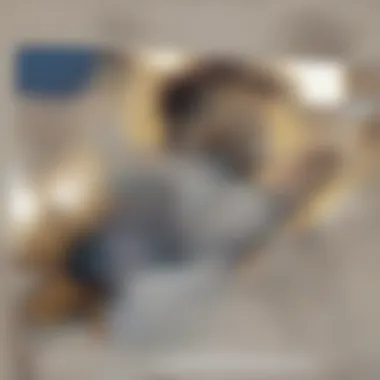

Irregularly shaped rooms pose the most significant challenge due to their unique contours. Measuring these spaces typically involves breaking them down into smaller rectangles or other simple geometric shapes. By measuring each of these sections separately, one can calculate their area and sum the totals for an overall square footage.
Alternatively, a more advanced method includes using a digital measuring device which can capture dimensions even in complex designs. Another option is utilizing grid paper where the room outline is drawn to scale, helping visualize size and shapes accurately.
Once all measurements are complete, it is essential to sum each area. This process allows the home or project owner to account for every surface area that requires paint. Irregular shapes may need thoughtfulness during painting to ensure complete coverage.
"Accurate measurement of different room shapes is vital for achieving not only an aesthetically pleasing finish but ensuring efficient use of resources."
In summary, understanding how to measure various room shapes enables better planning and execution for painting endeavors, assuring that every specific detail is considered for optimal results.
Calculating Square Footage
Calculating square footage is a key step before embarking on any painting project. This process involves determining the total area that will require paint, which directly affects both the cost and quantity of materials needed. Accurate calculations are crucial, as they help avoid wastage and ensure the desired coverage. Inadequate measurements can lead to insufficient paint, resulting in uneven finishes and potentially requiring additional trips to the store. Thus, the calculation of square footage acts as a foundational aspect of any successful painting effort.
Basic Formula for Square Footage
To calculate square footage, one must first understand the basic formula. The simplest way to ascertain the area of a rectangular or square room is to multiply the room's length by its width. The equation can be expressed as:
For example, if a room is 10 feet long and 12 feet wide, the calculation would be:
For rooms with more complex shapes or configurations, the area can be divided into smaller rectangles or squares, and the total square footage can be derived by adding these individual sections together. It is essential to maintain accurate measurements, as errors at this stage can cascade into larger problems later in the painting process.
Adjusting for Architectural Features
When measuring for square footage, one should also take into account any architectural features that may affect paint application. Elements such as built-in shelves, alcoves, and niches can complicate measurements. To make necessary adjustments, it is important first to calculate the square footage of such features separately. After calculating their areas, these values should be subtracted from the total square footage of the room.
For instance, if a built-in shelf occupies an area of 20 square feet in a 150-square-foot room, the effective area to paint becomes:
Remembering to consider these elements is vital for achieving a precise estimate, and can prevent overspending on paint or underestimating labor needs.
Including Windows and Doors
Windows and doors are inevitable components in most rooms and play a significant role in accurate square footage calculations. These openings not only affect the area to be painted but also impact paint required and cost consideration. To include windows and doors in the calculation, one can measure their dimensions and calculate the square footage they occupy, similar to how one would for a wall.
For example, if a window measures 3 feet by 4 feet, its calculated area is:
Once the total measurement for doors and windows is computed, it should be subtracted from the total room area. If the room's area is 200 square feet and there are two doors and a window totaling 30 square feet, the calculation will unfold as follows:
By adjusting square footage for windows and doors, one can ascertain the appropriate amount of paint required while managing budget effectively. Accurate calculations at this phase enhance efficiency and ensure better results in the final outcome.
Importance of Accurate Square Footage Calculation
Accurate square footage calculation is essential in the painting process. It influences multiple aspects, including material costs, labor efficiency, and overall project execution. Getting the measurement right is not just about knowing the dimensions of a room; it impacts the financial and aesthetic outcomes of a painting project.
Impact on Paint Quantity Estimation
Understanding the exact square footage allows you to estimate the correct amount of paint needed. If the measurement is too low, you may end up purchasing insufficient paint, leading to delays in project completion. Conversely, purchasing too much paint can result in unnecessary costs and wasted materials. When calculating paint quantity, it is vital to consider the paint's coverage rate. Most paints cover about 350 to 400 square feet per gallon, depending on the surface type and paint quality.
For example, if you measure a room to be 500 square feet, and you know each gallon covers 350 square feet, you can calculate you will need about two gallons of paint. This estimation takes into consideration not only the wall surface area but also a few additional factors, such as:
- The texture of your walls (more texture may require more paint)
- The number of coats you plan to apply
- Areas that won’t be painted (like windows and doors)
Applying precise measurements will allow you to minimize errors in paint quantity estimation, thereby enhancing efficiency in both finances and time.
Cost Implications of Over or Underestimating
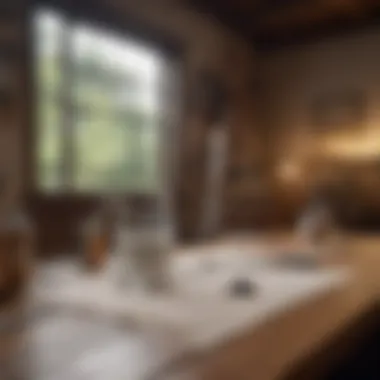
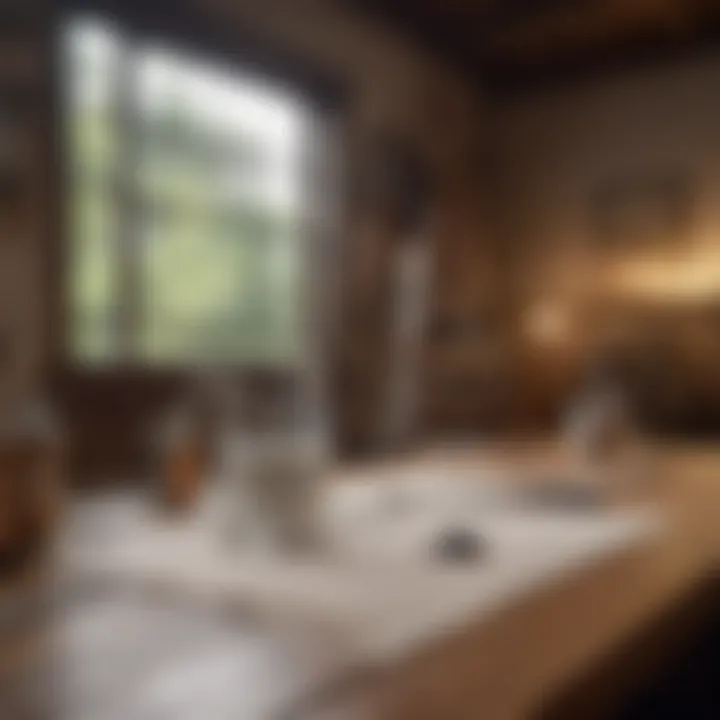
The financial impact of miscalculating square footage can be significant. Overestimating leads to wasted paint and resources, which directly increases project costs. It also extends the project timeline as extra paint takes time to return or dispose of properly.
On the other hand, underestimating can lead to project disruption. You may find yourself in need of additional gallons of paint, which could disrupt the workflow, lead to inconsistent color matching, and increase overall project duration.
In summary, precise calculations of square footage directly relate to:
- Budget management: Accurate numbers help manage and allocate costs efficiently.
- Material waste: Less waste means a smaller environmental footprint and better resource management.
- Project planning: A seamless workflow avoids costly delays that can impact overall timelines.
Accurate calculations ensure financial and aesthetic success in painting projects, enhancing not only your budget but also the experience and outcome of the task.
Common Challenges and Solutions
Measuring square footage for painting comes with its own set of obstacles. Adhering to precise measurements becomes particularly critical in ensuring optimal paint application, which can greatly influence the overall finish and quality of a room. Awareness of common challenges allows one to prepare adequately and implement effective solutions. This section will bid a closer look at two significant challenges encountered by those attempting to measure square footage accurately: dealing with odd angles and working with high ceilings.
Dealing with Odd Angles
Odd angles can complicate the measurement process, especially in older homes or creatively designed spaces. Sometimes, the layout may include alcoves, extensions, or unique architectural features that defy traditional rectangular measurements.
To address these challenges effectively, it is important to break down the space into manageable sections. Here are a few steps to navigate odd angles:
- Identify the Shapes: Visually categorize the room's sections. Aim for simple geometric shapes such as rectangles, triangles, or trapezoids that can easily be measured.
- Use Reference Points: Identify fixed points along walls and corners. These can serve as guides when measuring non-standard areas, allowing for greater accuracy.
- Apply the Triangle Method: For angled walls, utilize the Pythagorean theorem to determine lengths. If a corner creates a triangle, measure two sides, then calculate the hypotenuse using the formula a² + b² = c².
This method can simplify measurements and allow you to calculate square footage without confusion.
Working with High Ceilings
High ceilings present a different series of measurement challenges. Often, the upper areas of the room are not included in typical square footage calculations, which can lead to paint shortages or excess waste.
Here are some guidelines for measuring spaces with high ceilings:
- Use a Tape Measure with Long Lengths: Choosing a measuring tape long enough to reach the height is crucial. Employ a reliable partner to assist, especially in taking accurate vertical measurements.
- Consider the 3D Volume: Recognize that height does impact painting costs indirectly. If projecting paint quantities, understand the additional volume needed due to high walls.
- Document Everything: Keep a detailed log of measurements taken, noting any discrepancies. This practice can help validate calculations and ensure that the correct amount of paint is purchased.
"Understanding the unique challenges associated with space measuring is key to avoiding costly mistakes when undertaking a painting project."
By addressing these challenges, individuals can navigate the complexities of square footage measurement more effectively, leading to a more successful final painting project. This section emphasizes the importance of strategic planning and thoroughness in measurement to ensure that the area is precisely calculated, ultimately enhancing the quality of the results.
Final Considerations Before Painting
Before undertaking any painting project, it is vital to pause and conduct thorough final checks. The importance of these considerations cannot be overstated, as they ensure that the entire process is executed smoothly, efficiently, and with minimal waste. Understanding this stage allows you to confirm the integrity of your measurements and guarantee that you are prepared for the actual painting.
These final considerations serve several purposes. They help to minimize errors and discrepancies that can lead to unnecessary frustration and increased costs. Additionally, they provide an opportunity to revisit the project plan and confirm alignment with your design goals. Thus, approaching this phase meticulously is crucial for a satisfactory painting outcome.
Reviewing Measurements
At this stage, it is essential to go back over the measurements you have taken. This step may seem redundant, but it is a necessary one. Errors in measurement can lead to significant issues during the painting process. Using your previously measured dimensions, recheck each room's square footage.
- Cross-Verify Dimensions: Go through the length and width of each wall or affected surface. Ensure all numbers align with your initial calculations.
- Account for Fixtures: Don’t forget to review your calculations for windows and doors. Measure their sizes and ensure no area is overlooked.
- Use Multiple Tools: If possible, consider using different measuring tools or devices. For instance, if you initially used a tape measure, a digital measuring device may confirm your findings effectively.
- Keep a Record: Note down these measurements clearly. A small error in one part of the room can compound and lead to larger issues in the overall paint quantity.
This reviewing process is a safeguard for your project, allowing you to move forward with confidence and precision.
Choosing the Right Paint Quantity
Determining the correct amount of paint is directly related to the measurements you’ve calculated. Choosing the right quantity of paint not only impacts your budget but also affects the final finish of the project. Here's how to approach this task systematically:
- Give Yourself a Buffer: It is prudent to order slightly more paint than your calculated needs. A general rule is to buy an extra quart. This accounts for any potential miscalculations and any mistakes that might arise during application.
- Consider Paint Types: Different types of paint can cover varying areas. For instance, a high-quality paint such as Sherwin-Williams’ Duration may provide better coverage than a less expensive option.
- Factor in Multiple Coats: For colors that are significantly different from the original or when covering darker shades, you will likely need more than one coat. Adjust your calculations based on how many layers you anticipate applying.
- Use Coverage Calculators: Many paint brands offer online coverage calculators, giving you a more accurate idea based on surface type and paint choice.
By considering these elements, you can effectively prevent wastage and ensure that your project remains within budget.
"Careful planning can take a great project and make it exemplary."
When you finalize your preparations and clarify your paint needs, you are setting the stage for a smoother application process and improved results.
End
Understanding the square footage of a space can impact the choice of paint types and finishes as well. If a homeowner knows the exact measurements, they can select suitable products that meet specific requirements, whether it be a high durability for high-traffic areas or a more aesthetic finish for living rooms.
Furthermore, precision in measurements can enhance the effectiveness of the painting process. For instance, knowing the measurements helps in determining the right tools and strategies to use, whether it involves picking the right size brushes or rollers. It also aids in planning the logistics of the project, such as time management and the sequence of work.
"Accurate measurements are not just numbers, they are the foundation of a successful painting project."
Additionally, being aware of potential challenges, such as dealing with architectural features or irregular room shapes, can lead to better preparations. Anticipating these complexities allows for smoother execution and more favorable outcomes.
Finally, this guide provides essential insights for real estate enthusiasts, interior design lovers, and professionals. Embracing the importance of proper measurement techniques can elevate the standard of any painting endeavor. It also reinforces the sentiment that good planning and execution reflect directly on one's creative vision. Therefore, integrating accurate square footage measurement practices into your workflow is not just beneficial; it is essential for achieving desired results.







